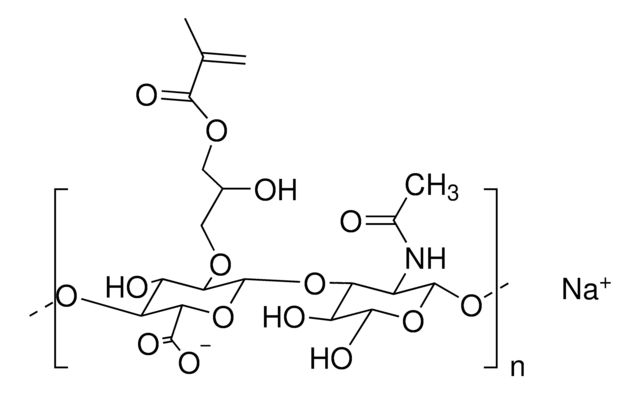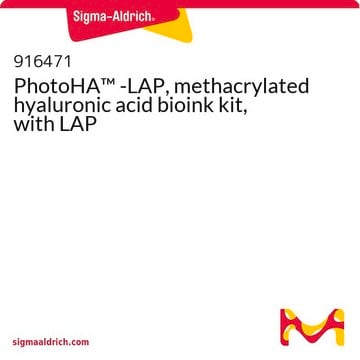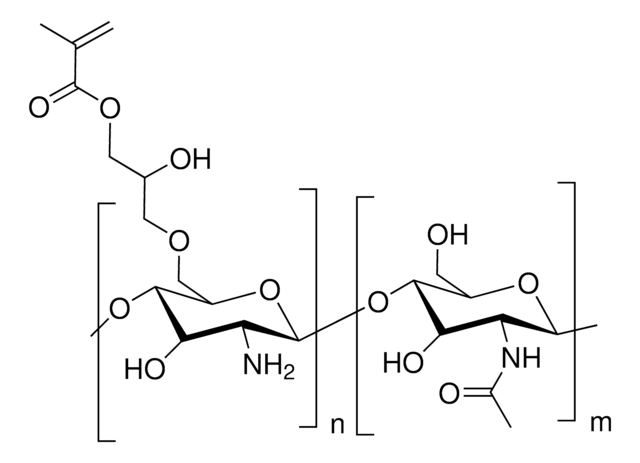924490
Hyaluronic acid methacrylate
Low Viscosity, Low Endotoxin, 0.2 um sterile filtered, 0.2 μm, sterile-filtered
Synonym(e):
HAMA, Hyaluronan, Hyaluronic acid, MeHA
About This Item
Empfohlene Produkte
Qualitätsniveau
Beschreibung
Validation : HNMR at 40°C
Sterilität
sterile-filtered
Form
(Solid chunks, fibers or powder)
Verunreinigungen
≤10 CFU/g Bioburden (Fungal)
≤10 CFU/g Bioburden (Total Aerobic)
100 EU/g Endotoxin
Farbe
white to pale yellow
Partikelgröße
0.2 μm
Lagertemp.
2-8°C
Suchen Sie nach ähnlichen Produkten? Aufrufen Leitfaden zum Produktvergleich
Verwandte Kategorien
Anwendung
Verpackung
Lagerklassenschlüssel
11 - Combustible Solids
WGK
WGK 3
Flammpunkt (°F)
Not applicable
Flammpunkt (°C)
Not applicable
Analysenzertifikate (COA)
Suchen Sie nach Analysenzertifikate (COA), indem Sie die Lot-/Chargennummer des Produkts eingeben. Lot- und Chargennummern sind auf dem Produktetikett hinter den Wörtern ‘Lot’ oder ‘Batch’ (Lot oder Charge) zu finden.
Besitzen Sie dieses Produkt bereits?
In der Dokumentenbibliothek finden Sie die Dokumentation zu den Produkten, die Sie kürzlich erworben haben.
Artikel
Engineered ECMs enhance immune therapy in cancer treatment by supporting cells and tissues and modulating immune response. They improve immune cell maturation, expansion, and regulation through biomaterial manipulation, acting as frameworks or carriers for enhanced tumor immunotherapy.
Unser Team von Wissenschaftlern verfügt über Erfahrung in allen Forschungsbereichen einschließlich Life Science, Materialwissenschaften, chemischer Synthese, Chromatographie, Analytik und vielen mehr..
Setzen Sie sich mit dem technischen Dienst in Verbindung.








